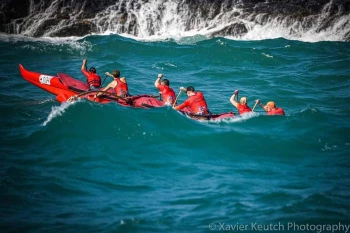The Anatomy of an Outrigger Canoe
An outrigger is a canoe was originally a sea-worthy vessel used by the Polynesians primarily for fishing but also for transportation, fun and of course racing. As the ocean around islands are rough places with large waves and swells, the outrigger was the first, truly sea-worthy vessel.
The single outrigger extends to the port (left side) of the main body of the vessel. The outrigger, traditionally called an "Ama", gives the outrigger canoe the stability needed to keep balance in choppy waters. The Ama is connected to the main body of the canoe by two arms called 'Iaku.
The Ama side of an outrigger is very stable. This is the side you can lean on to rest, jump into the boat, or push against to prevent the boat from tipping from a rogue wave.
Outrigger Seating
Every seat on an Outrigger has a specific role to play. The seats are numbered from 1-6, starting from the front of the canoe.
Seats | Role |
1 | Pacer It is vitally important that all paddlers in an OC keep the same rhythm. Seat 1 is pure endurance as if seat 1 fails the entire team fails to keep a steady rating. |
2 | Pacer As seat 1 has nobody in front of them, sometimes the pacing will drift slower/faster. Seat 2's role is to whisper to seat one and help keep it consistent |
3 + 4 | The Engine Seats 3 and 4 are the muscle, their role is to power the boat forward. Every 15 strokes or so one of them will call a "Hut" to switch sides. |
5 | All-Rounder Has the best view of the canoe, forcing everyone to maintain perfect timing. They are also in the best position to prevent a Huli (capsize). Seat 5 must also maintain a perfect stroke to avoid making the steer's life harder. |
6 | Steer Usually the most experienced paddler in the boat, the steer calls for pushes to catch a wave, seeks fast waters and navigates the canoe. |

In Together, Out Together
You will hear this phrase A LOT. In an OC 6, it is vitally important that everyone's paddles enter the water and exit the water together. To push the water, get a solid catch, and build speed and momentum, being perfectly in sync trumps strength or individual technique. This is why everyone must train together and learn to get into a perfectly flowing rhythm.



